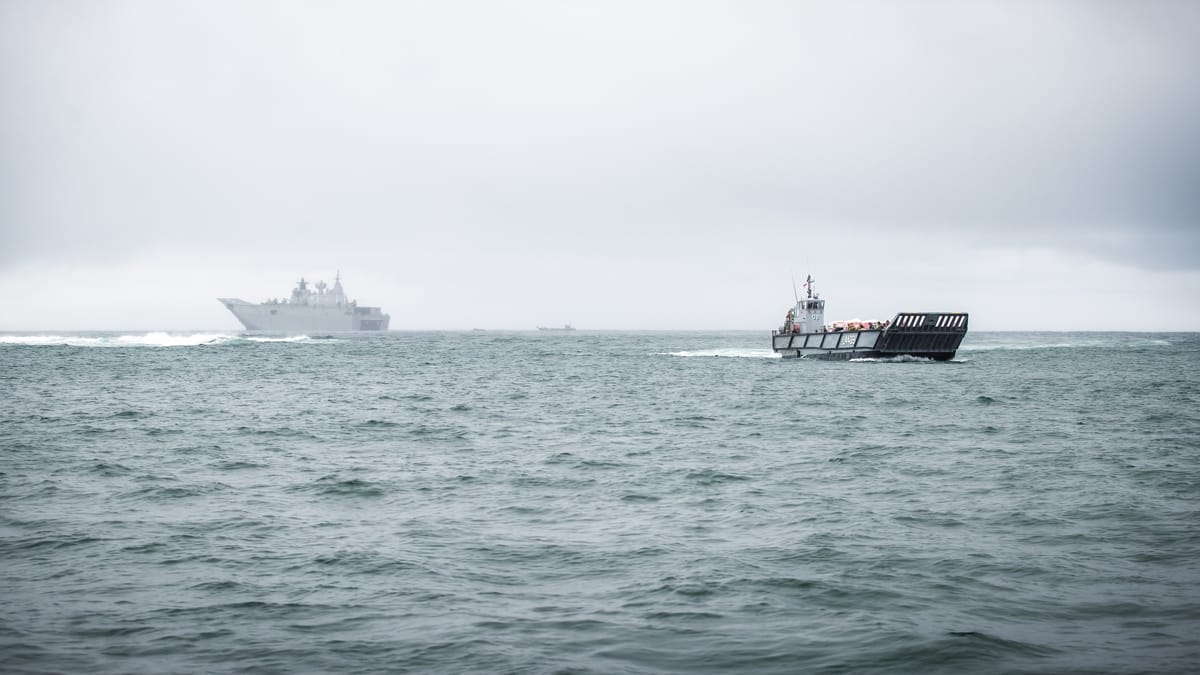Australia’s recent Defence Strategic Review (DSR) was described by Deputy Prime Minister and Defence Minister Richard Marles as “the blueprint for defence thinking for decades to come”.
But no one has asked: was the DSR the best way for the Albanese government to start planning Australia’s future security?
This may be because the answer seems self-evident: the global strategic environment is in flux, so surely we need to rethink Australia’s approach to defence?
Yes, we do.
But the diverse, interlinked, and complex nature of the security challenges that Australia faces mean that it needs to comprehensively and holistically rethink its security. This is particularly the case in the era of the “grey zone”, where civil and military threats are blurred, and when siloed approaches to crucial issues such as maritime security are becoming outdated.
Defence is an important part of this. But it is just one part.
The government should have begun with an integrated National Security Strategy that analysed the full range of security challenges that Australia confronts, starting with great power war, but extending to issues such as cyber attacks, transnational crime, and the challenges posed by climate change. Such a strategy could have considered all tools of statecraft that Australia can use to respond and outlined how Australia could work better with partners in the region on issues of mutual concern. The DSR could then have responded to, and been nested within, that strategy.
But while the Gillard government released Australia’s first national security strategy in 2013, governments since have been reluctant to take stock of the full range of security challenges. Instead, during the last decade, apart from the 2017 Foreign Policy White Paper (which came three Prime Ministers ago), the focus has mostly been on defence: we’ve seen Defence White Papers released in 2013 and 2016, the Defence Strategic Update in 2020, and now the DSR in 2023.
To their credit, the DSR authors emphasise the importance of “joined-up whole-of-government” statecraft. They recommend that the Department of Foreign Affairs and Trade be properly resourced to lead a “nationally determined and strategically directed whole-of-government statecraft effort in the Indo-Pacific” – a recommendation accepted by the government.
But the government’s decision to begin debates about Australia’s security through a defence lens presents risks of path dependence. With so much attention – and spending – focused on defence capability, what will be left for other aspects of Australia’s security? And will every security challenge Australia faces now be viewed primarily as a defence issue?
One of the most consequential DSR recommendations is for the US alliance to “remain central to Australia’s security and strategy”. Notably the word “alliance” is capitalised throughout, perhaps to emphasise its importance, while Australia’s other ANZUS ally, New Zealand, is relegated to the role of “partner”.
The DSR’s recommendation for Australia to go all-in with the US alliance is not surprising but has wide ranging implications. Decades of defence procurement and efforts at interoperability have deeply enmeshed Australia within the US defence establishment – and Americans within the Australian one.
And the Australia-US relationship extends well beyond a traditional alliance against military threats. It is now a far deeper alignment that stretches into the political, economic, and cultural spheres, and with political and psychological implications. While this may be the best way to secure Australia’s future, such a fundamental foreign policy decision needs further public and political debate.

Somewhat paradoxically, the DSR argues that “in the context of the Alliance and the deteriorating strategic environment, Australia must be more self-reliant so we are able to contribute more to regional stability”.
This generates a sound strategy of denial that leans into the strategic benefits of Australia’s maritime geography. This is a big step for a nation often accused of “seablindness”.
The DSR rightly argues that Navy should be “optimised for operating in Australia’s immediate region and for the security of our sea lines of communication and maritime trade”. However, questions remain about the changes to the Navy’s surface fleet that will enable this optimisation, which will be subject to a separate review. This is an important gap given that Australia’s maritime jurisdiction is over eight million square kilometres, and the Navy plays an important role in both conducting military operations at sea and in assisting other agencies to respond to maritime security and law enforcement challenges such as illegal fishing.
This gap highlights the fragmented nature of Australia’s security strategy, particularly in the maritime domain.
To little fanfare, Australia’s Home Affairs released a civil maritime security strategy in April 2022 designed to advance “Australia’s interests by actively managing non-military risk to Australia and Australia’s maritime domain”. It deliberately excluded military operations.
But it doesn’t make sense for Australia to maintain a separated approach to maritime security in the era of grey-zone threats. One of the key lessons from China’s activities in the South China Sea is the effectiveness of its “salami slicing” strategy to advance its interests while avoiding provoking conflict. These grey zone tactics are effective because conventional, military-led approaches struggle to defend against them. On this, the DSR is right: Australia does need a joined-up strategy, including to respond to increasing maritime security challenges as the seas around it become more contested.
While the government should ideally have debated and adopted a comprehensive National Security Strategy before engaging in the DSR, it’s not too late for it to do so.
There is still a lot of work needed to create the whole-of-government approach envisaged by the DSR and necessary to respond to the range of threats Australia faces. And this work needs to be as public and transparent as possible, bringing Australians along with the decisions that they will ultimately pay for.
This article draws on arguments developed in the authors’ forthcoming La Trobe University Press book, Girt by Sea: Reimagining Australia’s Security.

